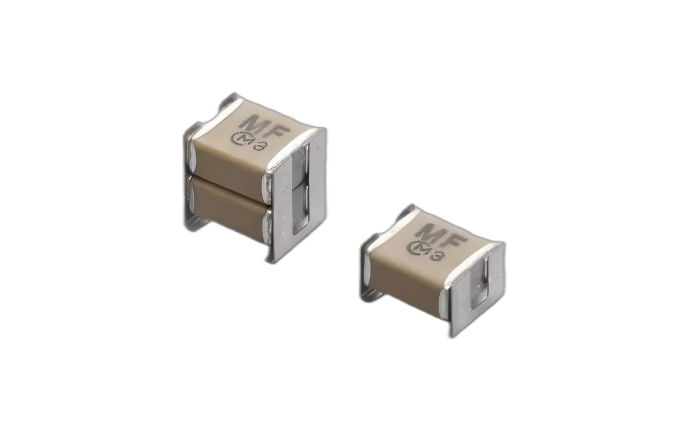Safety capacitors are capacitors that have been certified for safety and designed specifically to prevent electric shock and electromagnetic interference (EMI). They are widely used in home appliances, industrial equipment, power adapters, and other fields. The following are the main categories, characteristics, applications, and selection points of safety capacitors:

1、 Classified by security level
X capacitor (X1/X2/X3)
Definition: Spanning between power lines (L-N) to suppress differential mode interference.
characteristic:
X1: Rated voltage ≤ 250VAC, resistant to transient overvoltage (such as lightning impulse).
X2: Rated voltage ≤ 250VAC/300VAC (different standards), resistant to transient overvoltage.
X3: Rated voltage ≤ 120VAC, weak ability to withstand transient overvoltage.
Applications: power filtering, switching power supply, LED driver.
Selection: Prioritize X2 capacitors, balancing safety and cost.
Y capacitor (Y1/Y2/Y3/Y4)
Definition: Spanning between the power line and ground (L-PE/N-PE) to suppress common mode interference.
characteristic:
Y1: Rated voltage ≤ 500VAC, resistant to high voltage impact, used between the primary side and ground.
Y2: Rated voltage ≤ 300VAC, resistant to high voltage impact, used between the secondary side and ground.
Y3/Y4: Rated voltage ≤ 250VAC, weak resistance to high voltage impact.
Applications: Electromagnetic Compatibility (EMC) filtering, medical equipment, industrial control.
Selection: Y2 capacitor is the most commonly used, while Y1 capacitor is used in high-voltage scenarios.
2、 Classified by medium material
Polyester film (PET) safety capacitor
Medium: Polyester film.
characteristic:
Low cost: suitable for large-scale production.
Temperature stability is generally average: the capacity changes by about ± 5% with temperature.
Limited high-frequency performance: applicable frequency ≤ 1MHz.
Application: General power filter, household appliances.
Common models: CL21, X2-MKP.
Polypropylene film (PP) safety capacitor
Medium: Polypropylene film.
characteristic:
Low loss: The dielectric loss tangent (tan δ) is low, and the high-frequency performance is excellent.
High insulation resistance: high withstand voltage strength, low leakage current.
Good temperature stability: The capacity changes by about ± 2% with temperature.
Application: High frequency power supply, communication equipment, electromagnetic compatibility (EMC) filtering.
Common models: MKP-X2, MKP-Y2.
Ceramic safety capacitor
Medium: Ceramic materials (such as X7R, C0G).
characteristic:
Compact size: suitable for high-density circuit boards.
Excellent high-frequency characteristics: low ESL and high self resonant frequency.
Small capacity: generally ≤ 100nF.
Applications: 5G base stations, medical equipment, aerospace.
Common models: C0G-Y1, X7R-Y2.
3、 Classified by structure
Foil type safety capacitor
Structure: Made by winding metal foil as the electrode and dielectric material.
characteristic:
Large capacity: suitable for high current applications.
Good stability: Long term use with minimal capacity changes.
Large volume: not suitable for high-density circuit boards.
Applications: Power electronics, industrial control, audio equipment.
Metallized safety capacitors
Structure: Metal film is deposited on the surface of the medium as an electrode.
characteristic:
Self healing ability: When local breakdown occurs, the metal film can evaporate and restore insulation.
Compact size: With the same capacity, the volume is smaller than that of foil capacitors.
Wide capacity range: from pF level to μ F level.
Applications: High frequency circuits, pulse circuits, electromagnetic compatibility (EMC) filtering.
Common models: MKP-X2, MKP-Y2.
4、 Classified by application scenario
Power filter safety capacitor
Features: Large capacity, high voltage resistance, low ESR.
Application: Switching power supply, LED driver, charger.
Selection: X2/Y2 capacitor combination is used to suppress differential and common mode interference.
Electromagnetic compatibility (EMC) safety regulations for capacitors
Features: Good high-frequency performance, low loss, high stability.
Applications: Communication equipment, industrial control, medical equipment.
Selection: MKP-X2/Y2 or ceramic safety capacitors.
High voltage safety capacitor
Features: high voltage resistance, low leakage current, high reliability.
Applications: power electronic equipment, high-voltage direct current transmission (HVDC).
Selection: High voltage polypropylene film capacitors or specially designed ceramic capacitors.
5、 Classified by packaging form
Direct insertion safety capacitor
Features: The pins are soldered through the circuit board, suitable for traditional designs.
Application: Industrial control, maintenance and replacement scenarios.
Surface mount safety capacitors (SMD)
Type: 1206, 1210, 1812, etc. (size code, in inches).
Features: Small size, light weight, suitable for automated mounting.
Applications: Smartphones, laptops, 5G base stations.
6、 Key parameters for selection
Rated voltage: It needs to be 1.25 times higher than the actual working voltage (such as selecting a 315VAC capacitor for a 250VAC circuit).
Capacity: Choose according to filtering requirements, excessive capacity may increase costs.
ESR: High frequency circuits should choose models with ESR<10m Ω.
Temperature range: For extreme environments, products should be selected between -55 ℃ and+125 ℃.
Package size: In space limited scenarios, surface mount or miniaturized packaging is preferred.
Safety certification: Must comply with safety standards such as UL, ENEC, CQC, etc.
7、 Typical application scenarios
Home appliances: LED drivers use X2/Y2 capacitors to suppress power line interference.
Communication equipment: 5G base stations use MKP-X2 capacitors to resist high-frequency signal loss.
Medical equipment: The MRI power system uses ceramic safety capacitors to reduce power noise.
Industrial control: PLC adopts foil type safety capacitors to ensure high current filtering stability.
By reasonable classification and selection, safety capacitors can fully leverage their advantages in safety certification, high frequency, and high stability to meet diverse circuit requirements.
